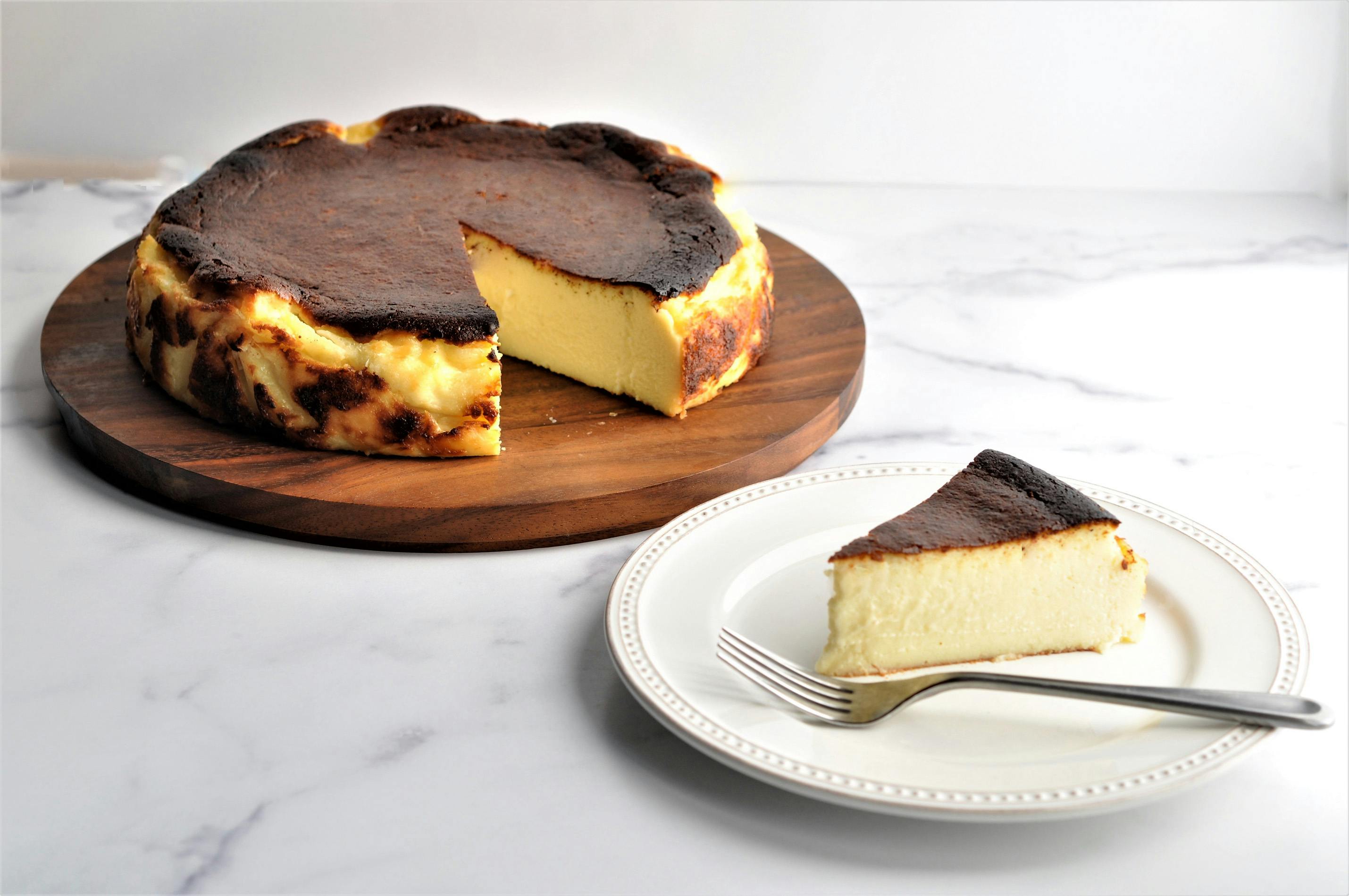Basque cheesecake has been around for decades, but it seems like the rest of the world is just catching on to this easy, impressive and incredibly luxurious dessert.
Originating from the city of San Sebastián in northern Spain, Basque cheesecake is the purest imaginable form of the dessert. Made from just cream cheese, cream, eggs, sugar and a touch of flour, it doesn't have anywhere to hide when it comes to flavor.
And while made with the same basic ingredients as the more familiar form we know so well here in the States, it seems a world away in terms of taste and texture.
With a creamy, custardy interior and a deeply browned, caramelized exterior, it tastes like a cross between cheesecake and crème brûlée, with none of the denseness of our classic cheesecake.
The process of making it is also very different.
Traditional cheesecake, while delicious, can be a tedious experience for the baker. It also typically takes multiple steps: making a crust and baking the cake, low and slow, in a foil-wrapped pan set in a water bath to prevent the top from cracking. It also takes a full day, when you add up the baking, cooling and chilling time, before you can even think about cutting into it. It's a commitment, to say the least.
Basque cheesecake, on the other hand, comes together in minutes. With no crust, you only have the filling to mix together. The hardest part is lining the springform pan with parchment paper and, thanks to a tip from a friend in Spain, that's not difficult, either.
The trick is to wad the parchment into a ball, get it wet and squeeze out the excess liquid. This makes the paper more pliable and easier to get into the edges of the bottom of the pan.
Instead of baking for a long time in a low-heat oven, this cake starts with the oven at full blast, then cooks for 45 minutes or less. I would say it's foolproof, but it does take some attention at the end of the baking process, as overcooking means you may not get the delightful gooeyness in the middle that's so integral to its charm.
When it's done, the top will be dark brown and the edges will be set, but the center will still be very jiggly. So jiggly, in fact, that you may think "This can't be right," but it is. It will firm up just enough to hold its form when sliced. Oh, and it's served at room temperature, so no need to wait until it's chilled before sinking a fork into your new favorite cheesecake.
Basque Cheesecake (Tarta de Queso)
Makes one (9-inch) cheesecake.
With a deliciously smooth and creamy interior and a deeply caramelized exterior, this incredibly easy Spanish dessert will make you rethink everything you know about cheesecake. Note: This cheesecake is traditionally served at room temperature. It's also delicious when chilled, although it does firm up a bit in the process. From Meredith Deeds.
• 2 lb. cream cheese, softened
• 1 1/2 c. sugar
• 6 large eggs
• 1 1/3 c. heavy cream
• 3/4 tsp. salt
• 3 tbsp. all-purpose flour
Directions
Position a rack in the center of the oven and preheat the oven to 500 degrees.
Take two sheets of 16- by 12-inch parchment paper and crumple each into a ball. Wet both balls of paper and squeeze out any excess liquid. (Wetting the paper will help you form it into the pan.) Uncrumple the parchment, shake off any remaining drops of water, and overlap the two sheets in a cross, pressing them into a 9-inch springform pan to completely cover the bottom and sides of the pan. Don't worry if the paper isn't completely flat against the sides.
Place the cream cheese and sugar into a large mixing bowl. Using an electric or stand mixer, mix together on medium-high speed until completely smooth, scraping down the sides as necessary. Add eggs, one at a time, mixing well after each addition. Stir in the cream and salt. Using a fine-meshed strainer, sift the flour over the batter and stir it in, just until combined. (You can use a food processor to mix the batter, but you will need one with a 14-cup capacity.)
Pour the batter into the prepared pan, making sure the parchment is pushed back enough to expose the top, and transfer the pan to the middle rack in the oven. Immediately turn heat down to 425 degrees. Bake the cheesecake for 40 to 50 minutes, rotating pan twice during the baking process to ensure even browning, until the top is deeply browned, the edges are just set, and the center is still quite jiggly. Begin checking the cake at 35 minutes and continue to monitor closely until done.
Remove the cheesecake from the oven and place it on a rack; cool the cake for 20 minutes and carefully remove the springform pan's ring. Continue to cool to room temperature before slicing. Serve the cheesecake at room temperature or refrigerate and serve chilled.
Store leftover cheesecake in the refrigerator.
Meredith Deeds is a cookbook author and food writer from Edina. Reach her at meredithdeeds@gmail.com. Follow her on Instagram at @meredithdeeds.








